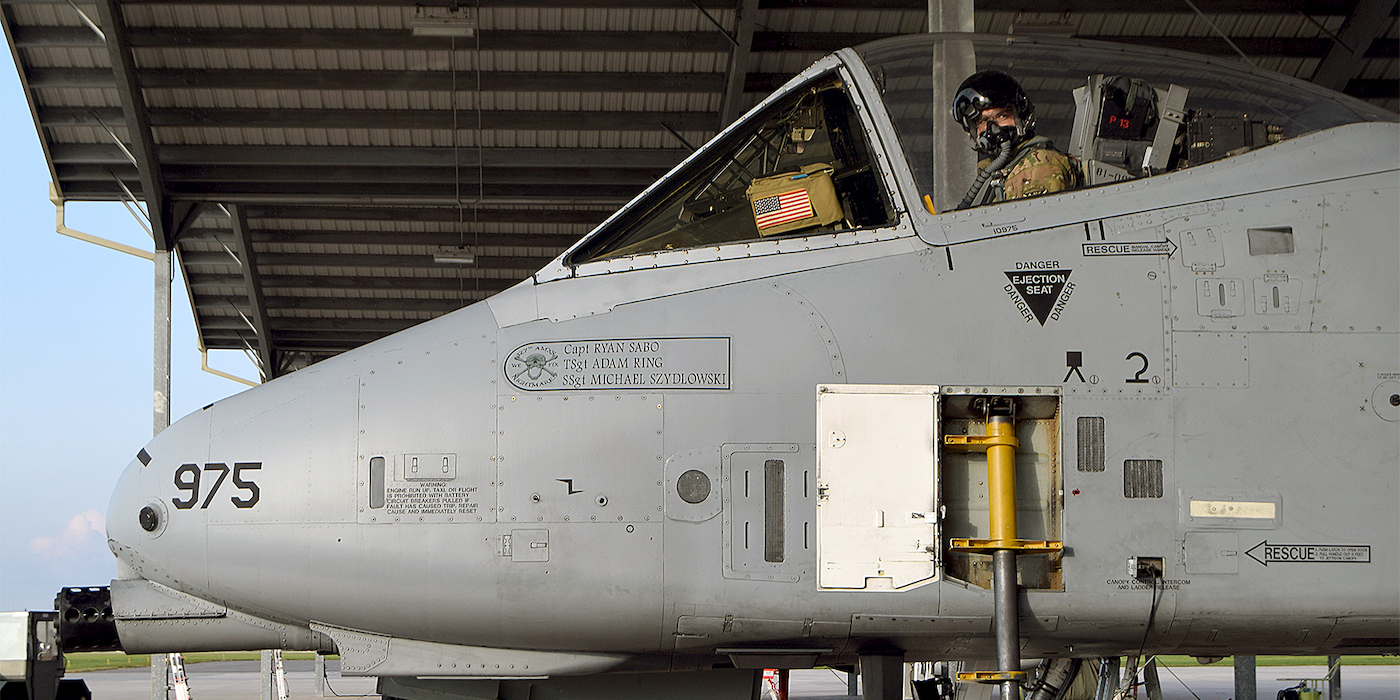- The HGU-55/P helmet gives A-10 pilots a central interface for everything they need, from their oxygen supply to communications to flight instruments.
- One of those add-ons, the Hybrid Optical-based Inertial Tracker, or HObIT, allows pilots to use their helmet-mounted cueing system for more accurate weapons delivery.
- Visit Business Insider’s homepage for more stories.
Most people have worn a helmet, whether for sports or riding a bike, but probably nothing like the helmet A-10C Thunderbolt II pilots use to connect them to their aircraft.
The HGU-55/P helmet provides A-10 pilots a central interface for everything they need, from oxygen supply to communications to flight instruments.
“The helmet is a multi-faceted tool that provides protection and life support as a baseline,” said 1st Lt. Anton King, 75th Fighter Squadron pilot.
“If we lose cockpit pressure at altitude, we’re already breathing through a sealed oxygen mask. In an ejection, the helmet provides protection while the visor and mask protect our eyes and face. [Then] the add-ons to the helmet were developed and tested to make sure the A-10 is more lethal on the battlefield.”
One of those add-ons is the Hybrid Optical-based Inertial Tracker, or HObIT, which allows pilots to use their helmet-mounted cueing system for more accurate weapons delivery.
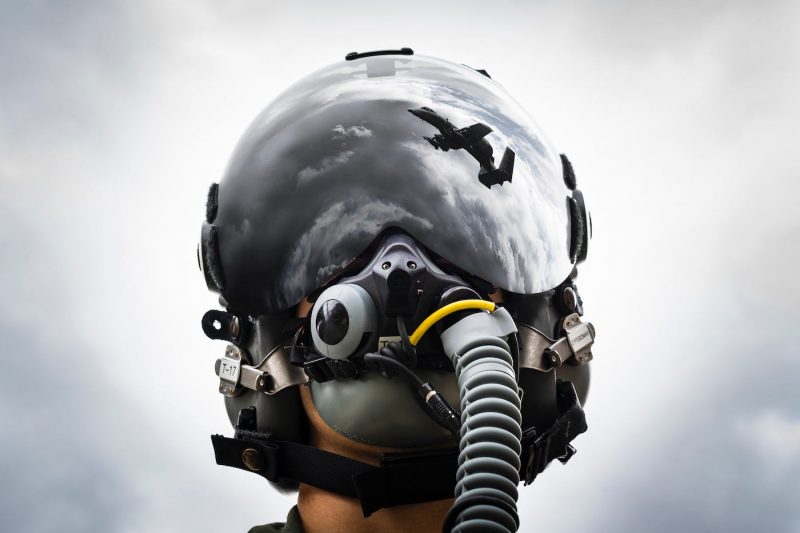
"The HObIT is a system that attaches to the helmet, and then we plug it into the jet itself," King said. "It's a way for the helmet to interface with the jet. Then, through the monocle over our right eye, we [see the] symbology. We can see targets, friendly locations and other aircraft on the data link in real-time just by looking out."
Symbols appear on the monocle and augment the pilot's actual view through the canopy, tracking targets realistically with the pilot's head movements.
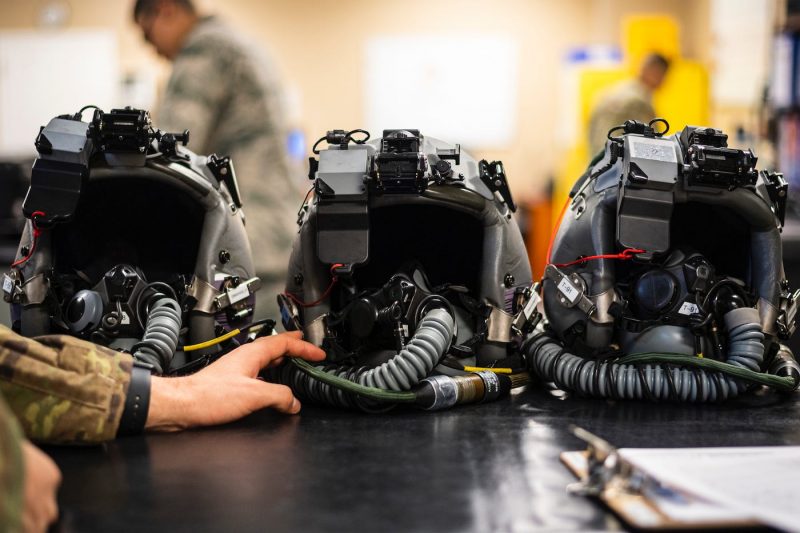
This is accomplished through the combined efforts of the HObIT's camera and a series of "fiducial" markers, or fixed points on the canopy that tell the system where the pilot is looking.
"Targets are going to show up as a red triangle, friendlies are going to be green, so you can look outside the cockpit and see the battle space layout in front of you," King said. "It just ups your situational awareness."
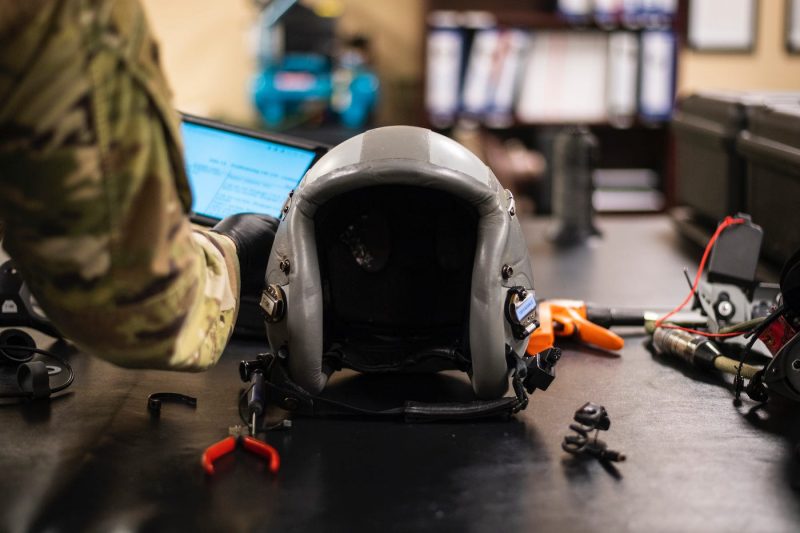
"Before, [you'd see] there's a town to the northwest of this target, then you look outside and try to find the town. Then there's a road that leads into the target area so you work your way down that way. With the HObIT, it shortens that chain because I immediately see the town and I see the target and everything lines up."
The HObIT also accommodates physical modifications depending on when the pilot is flying.
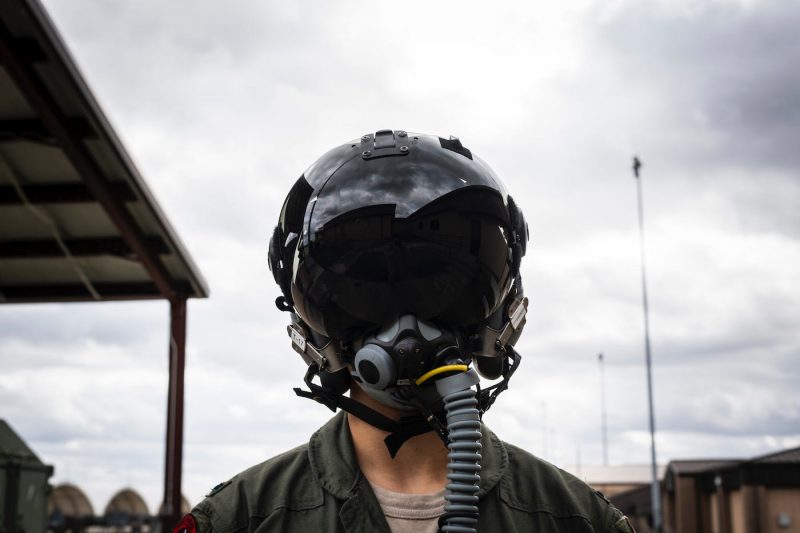
"One of the capabilities is mounting the HObIT system with two different options," said Airman 1st Class Marthinus Coetzee, 23d Operations Support Squadron aircrew flight equipment specialist.
"With the day configuration, you add the day visor assembly, which protects the eyes from the sun. The night configuration consists of a night vision goggle bracket that holds and powers the NVG during night operations."
Each of these attachments enhances the pilot's ability to perform the mission, but must be maintained by the airmen assigned to the 23d OSS aircrew flight equipment shop.
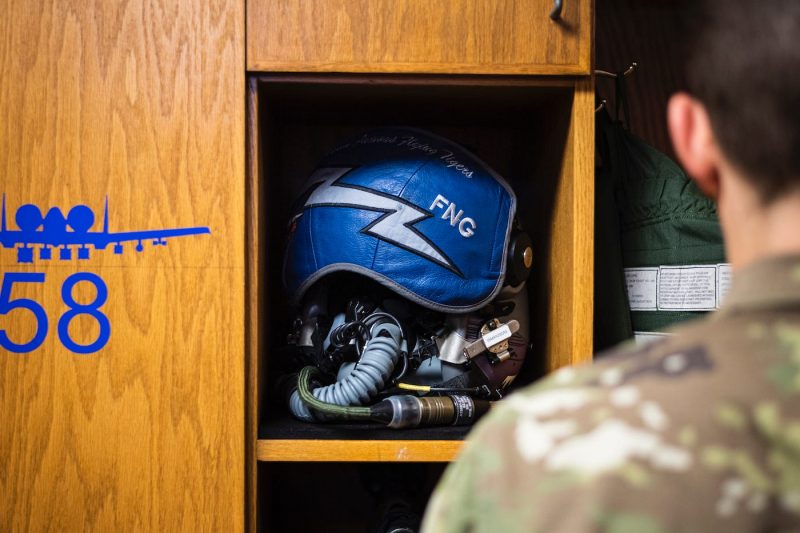
"AFE's responsibilities with the helmet and mask assembly are to maintain and inspect the helmet pre-flight, post-flight [and at scheduled intervals]," Coetzee said.
"Every morning we will [configure] the helmets with the proper day or night configuration depending on the hours it will be used. Once flying is over, we will 'post-flight' the gear, make sure it has no issues and disinfect it before returning to its locker."
"Every 30 days, we will completely dissemble, deep clean and then reassemble the helmet and mask to make sure everything is kept to its highest standard," Coetzee continued.
While it's AFE's job to maintain the entire system, the pilots are ultimately responsible for making sure their equipment fits their physical parameters before flight.
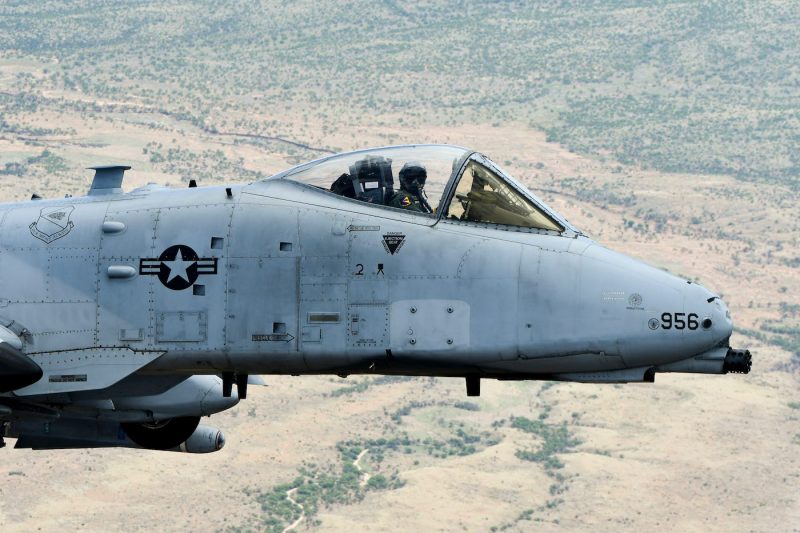
"We have a tester in AFE that we use before we go fly," King said. "You plug in just like you would in the jet, and it checks to make sure the system is working right, it's talking correctly and the helmet is tracking correctly."
